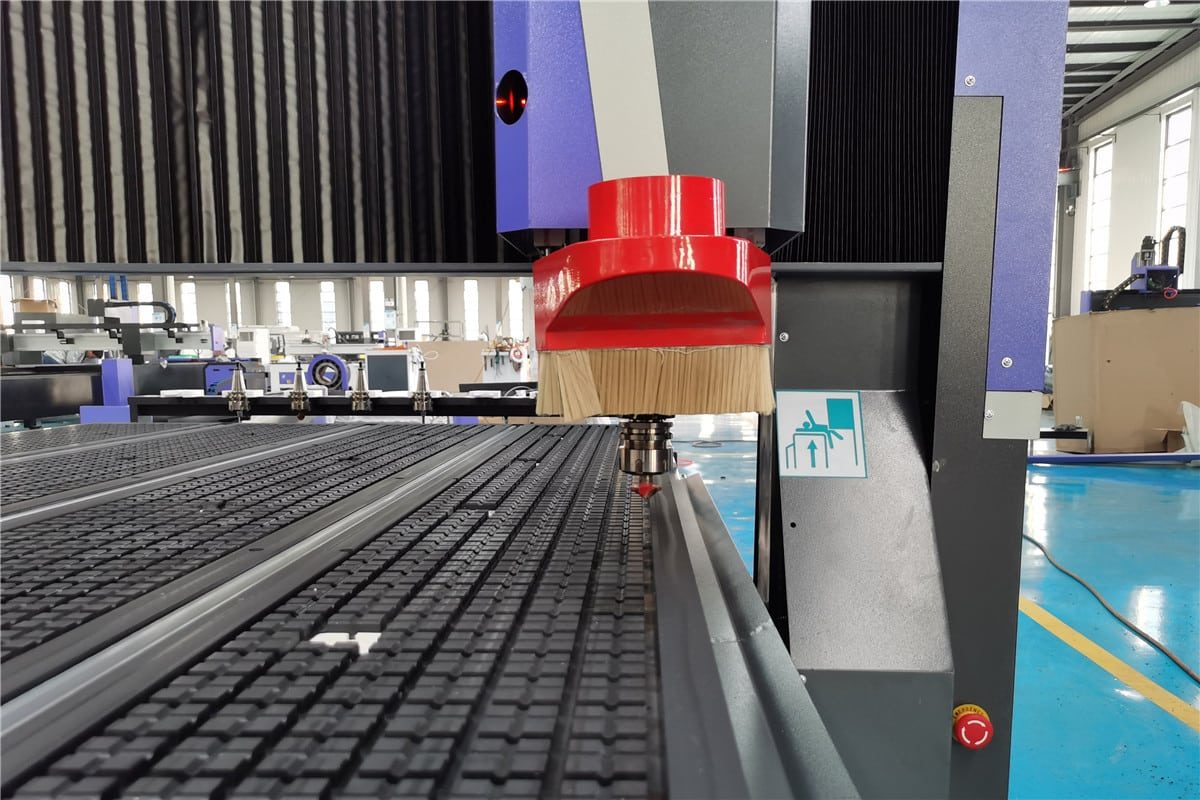CNC router spindles are essential components in CNC machines that perform various cutting, carving, and milling tasks. Selecting the right CNC router spindle is a critical decision that significantly influences the performance and capabilities of your machining operations. There are different types of CNC router spindles, and their selection depends on the application's specific requirements. This article introduces some common spindle types and their characteristics.

Fixed Spindle and ATC Spindle
Fixed Spindle: The rated power for fixed spindles can range from a few kilowatts watts to several ten thousand, depending on the size and intended use of the CNC router. Smaller hobbyist CNC routers may have spindles ranging from 1.5 kW to 2 kW. Industrial CNC routers may have fixed spindles with power ranging from 3 kW to 13.5 kW or more. Fixed spindles typically have a fixed speed range, often specified in revolutions per minute (RPM). Common speed ranges for fixed spindles might be around 6,000 RPM to 24,000 RPM. The actual speed range can vary based on the specific design and intended application.
ATC Spindles: ATC CNC router spindles are available in a wide range of power ratings, similar to fixed spindles. The rated power for ATC spindles can start from around 2.2 kW for smaller machines and go up to 12 kW or more for industrial-grade CNC routers. The speed range of ATC spindles varies widely and can range from a few hundred RPM to tens of thousands of RPM. Its advantage is that it can automatically adjust the spindle speed to optimize cutting conditions for different tools and materials. In some high-speed machining applications, ATC spindle speeds can exceed 30,000 RPM or even higher. One of the key features of ATC spindles is their ability to automatically change cutting tools during a CNC router operation.
Water-Cooled Spindle and Air-Cooled Spindle
Water-Cooled Spindle: Water-cooled spindles typically have a rated power ranging from around 1.5 kW to 7.5 kW. The power rating depends on the specific requirements of the application. Water-cooled spindles typically offer a wider speed range compared to air-cooled spindles. The maximum speed of a water-cooled spindle can range from a few thousand RPM (e.g., 6,000 RPM) to tens of thousands of RPM (e.g., 24,000 RPM or higher). These spindles use a water circulation system to dissipate heat generated during operation, allowing them to maintain stable performance even at high speeds.
Air-Cooled Spindle: Air-cooled spindles often have a higher power rating compared to water-cooled spindles. The rated power can range from 1.5 kW to 13.5 kW or more, depending on the application and machining requirements. Air-cooled spindles generally have a more limited speed range compared to water-cooled spindles. The maximum speed of an air-cooled spindle can vary depending on the model, but typically ranges from a few thousand RPM to around 18,000 RPM. Air-cooled spindles rely on a built-in fan or airflow to dissipate heat generated during operation, which can constrain the spindle's maximum speed and its ability to maintain stability at higher speeds compared to water-cooled counterparts.
High-Frequency Spindle and Low-Frequency Spindle
High-Frequency Spindle: High-frequency spindles often have a higher rated power compared to low-frequency spindles. The power can range from a few hundred watts to several kilowatts, depending on the application. High-frequency spindles are designed to operate at significantly higher speeds than low-frequency spindles. The speed range can vary, but it often extends from several thousand RPM (revolutions per minute) up to tens of thousands of RPM.
Low-Frequency Spindle: Low-frequency spindles generally have a lower rated power compared to high-frequency spindles. The power can range from a few hundred watts to several kilowatts, but it tends to be lower on average. Low-frequency spindles operate at lower speeds compared to high-frequency spindles. The speed range typically extends from a few hundred RPM to several thousand RPM.
It's important to note that these are general guidelines, and the specifications can vary based on the CNC router model and manufacturer. When selecting a spindle for a specific CNC router, it's essential to consider factors such as the material being machined, the required cutting speeds, and the complexity of the machining tasks. Additionally, always refer to the manufacturer's specifications and guidelines for the particular spindle model you are considering, as they will provide accurate and detailed information on rated power, speed ranges, cooling requirements, and other important parameters.
Comments on “What Types of CNC Router Spindles Are There?”